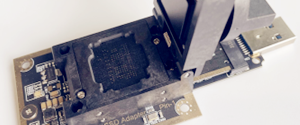Flying height /Floating height /Head gap
Thanks to the effort of Mr. Charles M. Kozierok to provide the following valueable information about flying height, we found this is very much useful to understand more about the RW heads and how it works! Cool!
The amount of space between the heads and the platters is called the floating height or flying height. It is also sometimes called the head gap, and some hard disk manufacturers refer to the heads as riding on an “air bearing”. The read/write head assemblies are spring-loaded–using the spring steel of the head arms–which causes the sliders to press against the platters when the disk is stationary. (This is done to ensure that the heads don’t drift away from the platters; maintaining an exact floating height is essential for correct operation.) When the disk spins up to operating speed, the high speed causes air to flow under the sliders and lift them off the surface of the disk–the same principle of lift that operates on aircraft wings and enables them to fly.
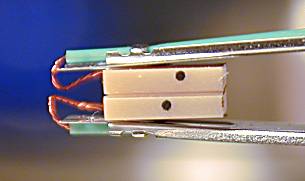 A pair of mated head sliders with their platter removed. You can see that the tension of the head arms has caused them to press against each other.
A pair of mated head sliders with their platter removed. You can see that the tension of the head arms has caused them to press against each other.
Due to the very small distance from the heads to the platters–normally measured in millionths of an inch–the hard disk is assembled in a clean room containing air specially filtered to remove all but the tiniest particles. Air however is required for the heads to function. Whenever someone suggests that the inside of a hard disk is maintained under a vacuum–and it always happens–just ask them how exactly the heads can float on the surface of the disk if there is no air. You will also hear people say that the drive’s interior is “sealed” (including, I must admit, myself at one point). This is also generally untrue: while the disk’s internal environment is separate from the outside air to keep it clean, air exchange is permitted between the outside and inside of the drive to allow the drive to adjust to changes in air pressure. A special “breather” filter is installed to prevent foreign matter from contaminating the drive.
The distance from the platters to the heads is a specific design parameter that is tightly controlled by the engineers that create the drive. By adjusting the strength of the springs to match the other drive parameters (such as the speed the disks are spinning and the size and shape of the heads) the float height can be precisely maintained. If the height is too great, the heads can’t properly read and write the platter. If it is too small, there is increased chance of a head crash (ouch.) As is known, increasing areal density means that weaker magnetic fields must be used in storing data on the disks. When this is done the heads must be allowed to ride closer and closer to the platter surface to pick up the weaker signals, which requires other quality improvements to the drive to make sure that there is no chance of a head crash.
It’s actually quite amazing how close to the surface of the disks the heads fly without touching. To put it into perspective, a modern hard disk has a floating height of an amazing 0.5 microinches. A human hair has a thickness of over 2,000 microinches! You can see why keeping dirt out of the hard disk is so important! In fact, the floating height of a hard disk is smaller than the circuit size of a microprocessor. What’s even more amazing is how much abuse these hard disks can take when they are placed in laptop PCs, for example, given these facts, and how many people take this technology for granted every day…
 This illustration gives you some idea of just how small the flying
This illustration gives you some idea of just how small the flying
height of a modern hard disk is (and today’s hard disks have
flying heights significantly lower than 3-7 millionths of an inch!
When the areal density of a drive is increased to improve capacity and performance, the magnetic fields are made smaller and weaker. To compensate, either the heads must be made more sensitive, or the floating height must be decreased. Each time the floating height is decreased, the mechanical aspects of the disk must be adjusted to make sure that the platters are flatter, the alignment of the platter assembly and the read/write heads is perfect, and there is no dust or dirt on the surface of the platters. Vibration and shock also become more of a concern, and must be compensated for. This is one reason why manufacturers are turning to smaller platters, as well as the use of glass platter substrates. Newer heads such as GMR are preferred because they allow a higher flying height than older, less sensitive heads, all else being equal.
As the flying height of drives continues to decrease, hard disk engineers are recognizing that we may soon reach the point where it cannot be made any smaller without touching the surfaces of the platters. There is actually talk about the possibility of going back to the concept of contact disks, where the head gap is intentionally made zero. This would allow even smaller magnetic fields than is possible in today’s drives. Of course, this brings us full circle to the first hard disk experiments in the 1950s! The difference of course is almost 50 years of advances in technology. For example, thin film media is much tougher than the oxide media used on contact disks half a century ago, and lubricating agents are much more advanced as well. Even so, it will probably be several years before we know if this technology will be feasible from both an engineering and manufacturing standpoint.
Data recovery Salon welcomes your comments and share with us your ideas, suggestions and experience. Data recovery salon is dedicated in sharing the most useful data recovery information with our users and only if you are good at data recovery or related knowledge, please kindly drop us an email and we will publish your article here. We need to make data recovery Salon to be the most professional and free data recovery E-book online.
World’s Top Data Recovery Hardware Tools

Easy to use at good price
Recover SATA, IDE, External HDDs, NVME SSDs, etc Order Now here
POTABLE DEVICE & NVME SSD RECOVERY TOOL
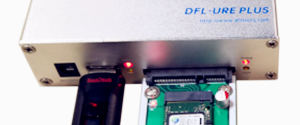
Recover USB Device and NVME SSDs at high speed! Read Details here.
DFL-PCIE DATA RECOVERY RECHARGE
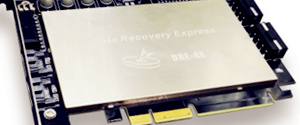
Best data recovery hardware tool to start a data recovery business, read details here
RECOVER SCRATCHED HDDS

Recover lost data from scratched hard drives, read details here.
SURFACE PRO. RECOVERY
BEST HEAD REPLACEMENT TOOLS
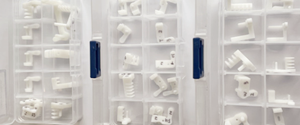
The most cost-effective head replacement tools for Seagate, WD, Samsung, Hitachi, Toshiba, Fujitsu

